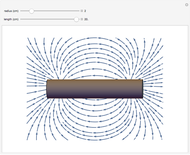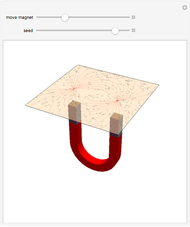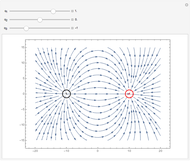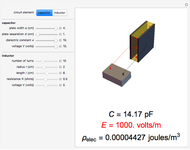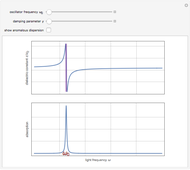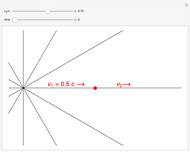Magnetic Hysteresis

Requires a Wolfram Notebook System
Interact on desktop, mobile and cloud with the free Wolfram Player or other Wolfram Language products.
Ferromagnetic materials exhibit hysteresis, meaning dependence of magnetization on the history of the applied magnetic field. A ferromagnet can thus be described as exhibiting memory of its previous magnetic states. A sample of iron is comprised of domains, microscopic regions in which the atomic magnets are locally aligned. These are represented in the graphic by blue arrows. In the unmagnetized state, the domains are randomly oriented. When an external magnetic field  , expressed in units of amperes/meter (A/m), is applied, the domains begin to align themselves in the direction of the magnetic field. The iron becomes magnetized, acquiring a magnetic flux density (or magnetic induction)
, expressed in units of amperes/meter (A/m), is applied, the domains begin to align themselves in the direction of the magnetic field. The iron becomes magnetized, acquiring a magnetic flux density (or magnetic induction)  , expressed in units of tesla (T).
, expressed in units of tesla (T).
Contributed by: S. M. Blinder (March 2011)
Open content licensed under CC BY-NC-SA
Snapshots
Details
Snapshot 1: saturation of magnetic flux 
Snapshot 2: remanence  exhibited when
exhibited when 
Snapshot 3: coercive field  demagnetizes iron bar
demagnetizes iron bar
Snapshot 4: saturation in the opposite direction
Snapshot 5: lower coercivity reduces energy loss per cycle, desirable in transformers and motor cores
Snapshot 6: higher coercivity is desirable for permanent magnets and magnetic recording devices
Permanent Citation
"Magnetic Hysteresis"
http://demonstrations.wolfram.com/MagneticHysteresis/
Wolfram Demonstrations Project
Published: March 7 2011















